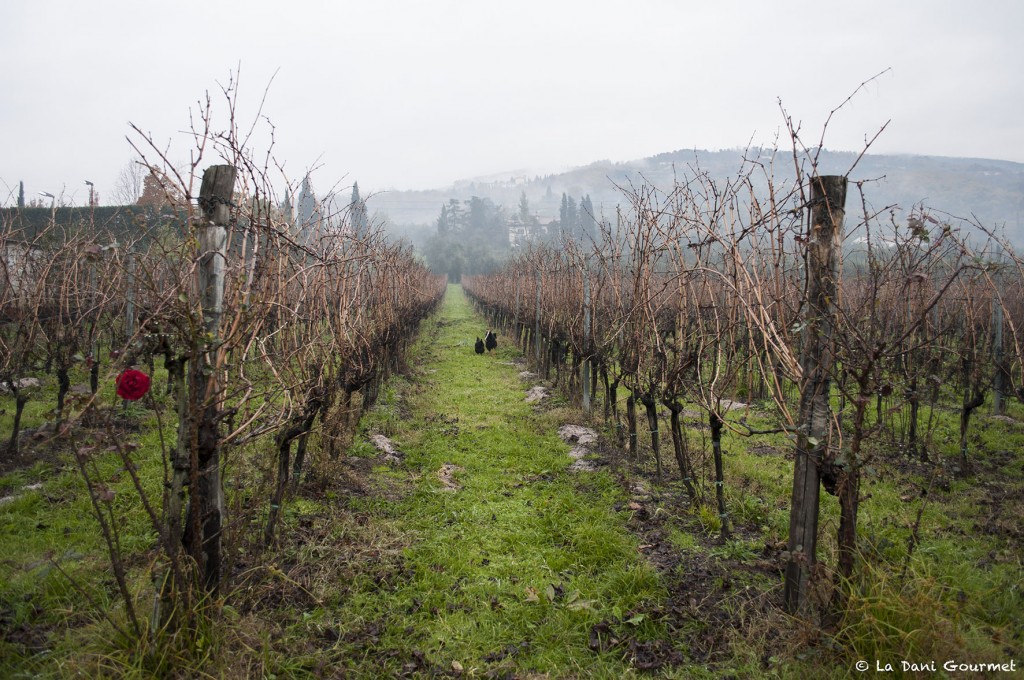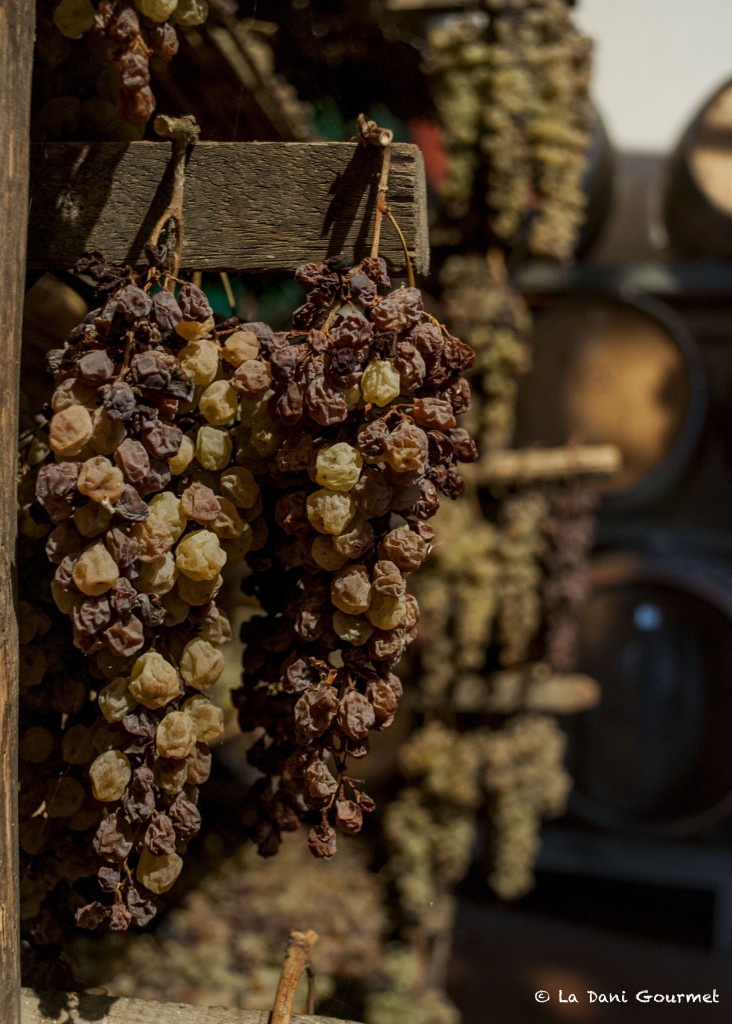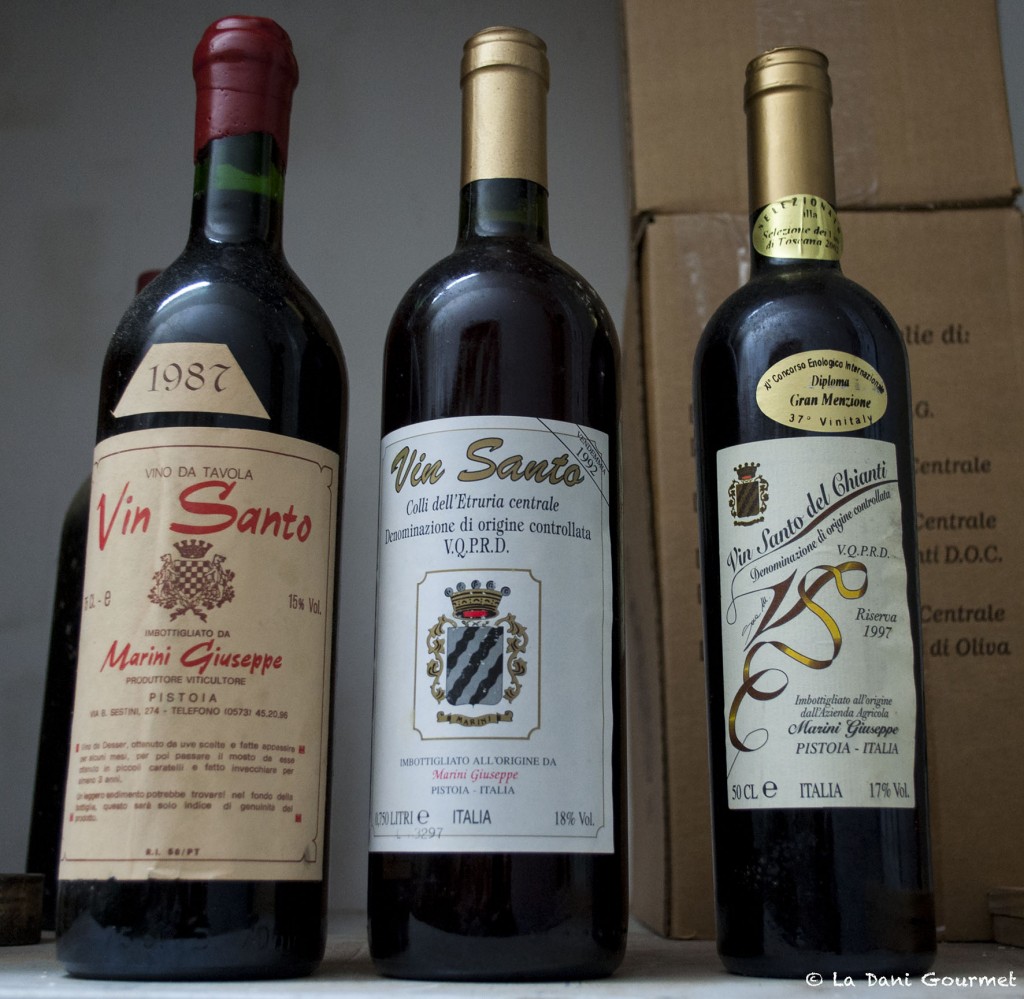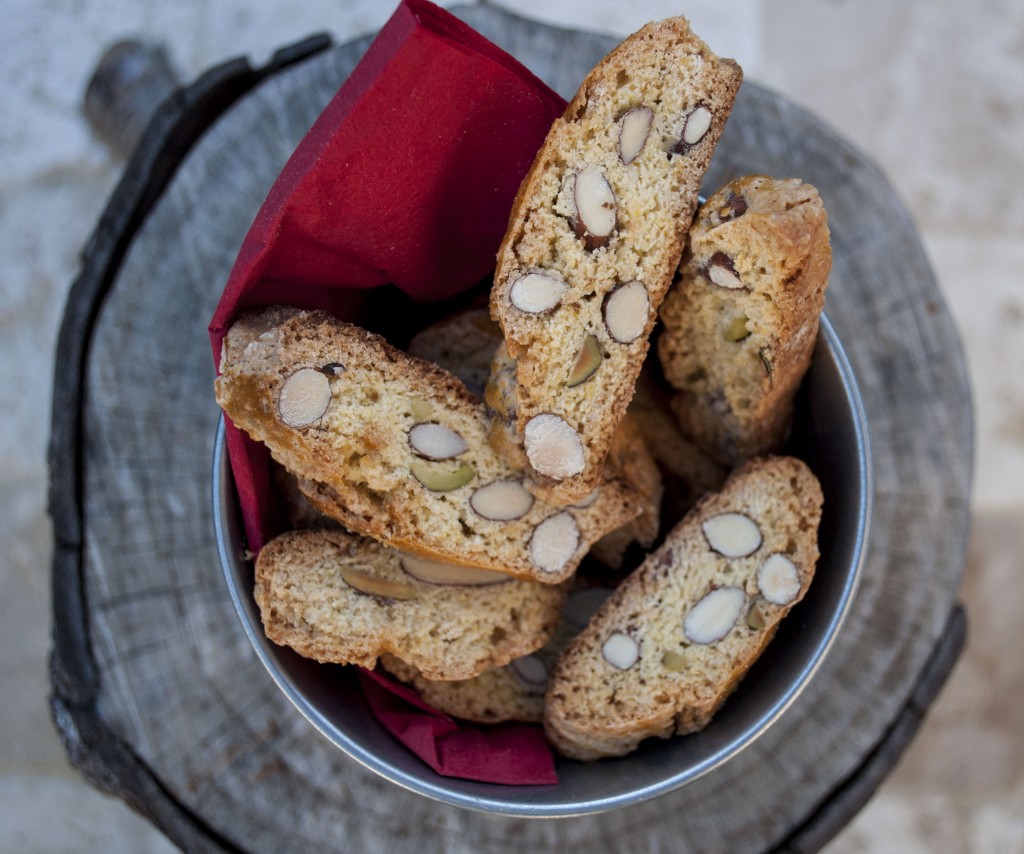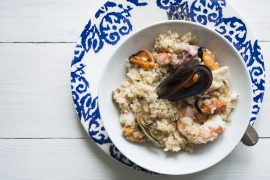When visiting a Tuscan trattoria, you certainly have been offered Cantucci and Vin Santo at the end of the meal. The famous couple is indeed iconic into the Tuscan and Italian food and wine heritage.
Despite its success in the combination with Cantucci, Vin Santo is frequently forgotten by the today’s market trends.
It’s a real shame, since it is one of the most typical wine in Tuscany, deeply rooted into the historical memory of this region. It’s produced since the Middle Ages, following a method passed on from generation to generation.
Real gourmets, as Veronelli himself stated, consider it as a meditation wine, to be tasted alone to fully respect and appreciate the flavour. Giuseppe Marini – the owner and producer of an excellent, and awarded Vin Santo del Chianti – agrees.
The Azienda Agricola Marini Giuseppe is located in the countryside closed to Pistoia, not far from Florence, where they have been producing Vinsanto for decades, respecting the phases and the time of an ancient method.
The Vin Santo del Chianti DOC is an Italian and Tuscan passito wine, produced using Trebbiano and Malvasia grapes, carefully chosen before harvesting.
The grapes have to be healthy, ripe and not too dense. They are brought in the Vinsantaia, an airy attic where they will dry up for about three months. During this period, grapes will lose water and a light mould will appear on the skin, which is fundamental for the final taste.

At the end of December, the grapes are pressed and the must, sugary and concentrated, will be placed into caratelli, specific wooden barrels, where it will ferment for three years.
Three whole years of natural fermentation and no action from the producer.
Then, caratelli are opened, and after a taste, Vinsanto is blended into a tank for another year. Later, Vinsanto is ready to be bottled and rest for the last year in the cellar, before selling.
A five-year period is the time that Marini family dedicates to this excellent wine, a time made of patience, respect and passion towards this delight.
Featuring a nuts and raisin scents, it’s perfect combined with Cantuccio.
They are one of the most known Italian Cookies, and they’re usually called in Tuscany “Biscotti di Prato“. They are actual “bis-cotti“, since they are cooked twice and they are rich in sugar, which makes them crunchy and perfect to be soaked.
I give you a recipe I love, taken from a book that every Tuscan lover should have: Il Grande libro della Vera Cucina Toscana, written by Paolo Petroni (There is also an English version, whose name should be The complete book of Florentine cooking). An interesting roundup of traditional Tuscan recipes, with historical references and insights about some ingredients or dishes.
BISCOTTI DI PRATO or CANTUCCI
Ingrdients for a nice kilo
500 g flour
300 g sugar
250 g almonds, with the skin on (I substituted 50 g with pistachio nuts)
3 eggs
2 egg yolks+ 1 egg yolk to brush the cantucci before baking
50 g melted butter
1/2 baking powder
1 shot glass of Vinsanto
salt
Toast almonds and pistachio nuts at 150°C for about 10 minutes and let them cool down.
In a big bowl, put the flour together with the sugar and starts adding the eggs, the two egg yolks, the butter, the Vinsanto and a pinch of salt.
Mix the dough (not too much) and add the nuts (almond+pistachio).
Shape the dough in long rolls, about 5 cm wide and 1,5 cm high and put them on a baking sheet. Brush with the egg yolk and bake for 30 minutes at 200°C, being carefull not to burn the bottom of the rolls.
When they are nice and golden, remove them from the oven and after a couple of minutes and make oblique cuts, at about one cm distances.
Lower the oven temperature at 180-170°C and put the cantucci back on the baking tray, cut side up. Let them “biscottare” (second bake) for about 10 minutes. They don’t have to get brown. Pay attention!
They last for ten days, or more, if properly stored in a box.
Enjoy!





 Based on 1 Review(s)
Based on 1 Review(s)This post is also available in: Italian


